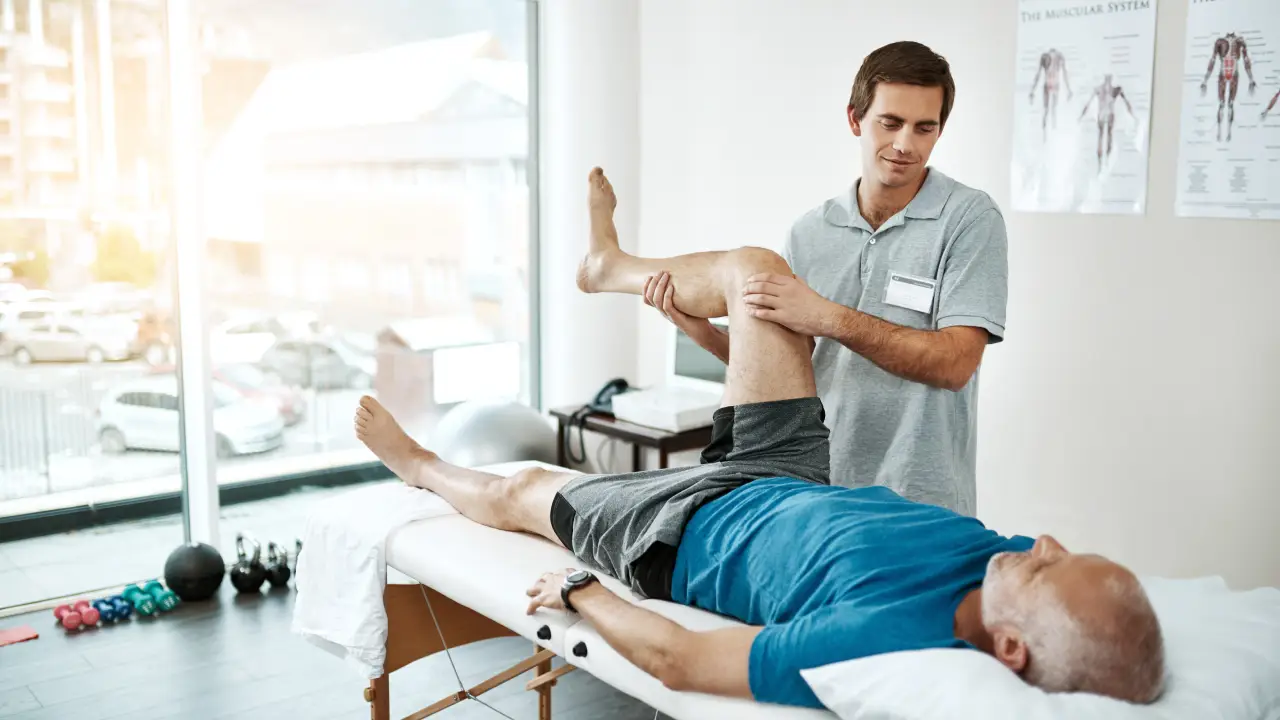
Book An Appointment
802 Southdown rd, Unit # C1, Mississauga, ON, L5J 2Y4
Email: goactive.mississauga@gmail.com
Book Appointment Call UsMore Recent Blogs

Tue Aug 5
5 Stretching Routines Commonly Used in Physiotherapy in Mississauga
What Role Does Stretching Play in Recovery?
Stretching is not just a warm-up or cooldown technique—it’s a deliberate part of movement retraining. In many cases, it’s the first step in restoring mobility and easing muscle tightness. For individuals attending physiotherapy in Mississauga, stretching routines often serve as a foundation for more targeted interventions.
From long-standing desk-related tension to injury rehabilitation, stretching supports joint alignment, muscular balance, and movement efficiency. Physiotherapists design clinical stretching to be focused, progressive, and adapted to the individual, unlike the generic routines found in typical online fitness videos.
Why Is Stretching Prioritized in Physiotherapy?
One of the most common patterns seen in physiotherapy in Mississauga is reduced flexibility due to prolonged sitting, injury, surgery, or repetitive strain. Tight muscles and restricted joints can interfere with natural movement, contributing to further discomfort or dysfunction.
Stretching helps:
- Loosen overactive or shortened muscles
- Improve blood flow to injured areas
- Prepare the body for strengthening
- Support posture and body mechanics
- Relieve muscle tension without relying solely on manual treatment
These outcomes contribute directly to functional recovery, whether the goal is walking without pain, sitting upright comfortably, or returning to sport.
How Are Stretching Routines Chosen in Physiotherapy?
Stretching is always selected based on a person’s specific needs. During an initial assessment for physiotherapy in Mississauga, your therapist will evaluate muscle length, joint mobility, and pain triggers. Routines are then adapted to suit your current movement patterns, recovery phase, and daily lifestyle demands.
Below are five stretching routines frequently used by physiotherapists to support common recovery goals.

1. Hamstring Mobility Routine
Targets: Lower back strain, postural imbalances, walking issues
Stiff hamstrings are a common cause of lower back discomfort and poor standing posture. For clients seeking physiotherapy in Mississauga, this routine often includes:
- Supine hamstring stretches with a strap
- Seated forward reach (with back support)
- Wall-supported single-leg raises
Holding each stretch for 20–30 seconds and repeating slowly helps prevent overstraining. This routine can be beneficial for people returning to work after injury or those struggling with prolonged sitting.
2. Hip Flexor Release Series
Targets: Desk-related tightness, postural issues, walking discomfort
Tightness in the front of the hips can contribute to back discomfort, pelvic tilt, and uneven gait. In many physiotherapy programs in Mississauga, this routine helps to release pressure and restore control gently.
- Kneeling lunge with a neutral pelvis
- Standing dynamic swings
- Side-lying leg drops
The emphasis is on form and breath rather than depth. These stretches are commonly introduced early for individuals recovering from inactivity or lower-body injuries.
3. Mid-Back (Thoracic) Stretch Routine
Targets: Shoulder mobility, neck tension, poor posture
Restricted thoracic movement affects everything from breathing to lifting your arms. If you’re attending physiotherapy in Mississauga for shoulder or upper back discomfort, thoracic-focused stretching may include:
- Foam roller extensions
- Thread-the-needle stretch (seated or kneeling)
- Seated upper-body rotations
This routine is especially valuable for people with desk-bound habits or those recovering from upper-body strains.
4. Calf and Ankle Flexibility Routine
Targets: Gait training, post-op stiffness, plantar issues
In physiotherapy in Mississauga, ankle mobility is key for tasks like walking, climbing stairs, or regaining balance. Calf and ankle stretches can involve:
- Wall push stretches for the gastrocnemius and soleus
- Seated towel-assisted dorsiflexion
- Eccentric heel drops on a step
These movements promote joint glide and muscle length, preparing the lower limb for further rehabilitation steps like balance or resistance work.
5. Neck and Shoulder Relief Sequence
Targets: Whiplash recovery, desk strain, chronic neck discomfort
Neck and shoulder issues are among the top reasons people seek physiotherapy in Mississauga. A gentle yet targeted stretching sequence helps improve range and reduce daily discomfort:
- Chin tucks (against the wall or lying down)
- Upper trapezius and levator scapulae stretches
- Cross-body shoulder pulls
Because the neck is sensitive, therapists ensure safe progression and proper alignment during these exercises.
How to Maximize the Benefit of Stretching
The effectiveness of stretching lies not in how deep the movement goes, but in how consistently and mindfully it’s performed. Physiotherapists in Mississauga often guide clients to focus on controlled, low-force stretches that gradually build range without aggravating healing tissues. Instead of pushing through discomfort, the goal is to ease into movement that the body can sustain and build on.
To support this, therapists in physiotherapy in Mississauga often combine stretching with techniques like guided breathing, gentle soft tissue mobilization, corrective strengthening, and movement retraining. This integrated approach promotes smoother transitions in daily activities and reduces reliance on passive care. As flexibility improves, the focus shifts to building control and awareness through active movement rather than just increasing range.
One Stretch Doesn’t Fit All
Attempting online stretches without professional guidance can sometimes worsen pain or reinforce faulty movement. Those considering physiotherapy in Mississauga should begin with a thorough clinical assessment to ensure their stretching routine aligns with their condition.
Ready to Begin?
Whether you’re dealing with tight muscles, chronic tension, or recovery after surgery, proper stretching can be an essential part of your journey back to comfortable movement. Go Active Physiotherapy provides tailored stretching and movement plans designed around each person’s unique goals and daily demands.



